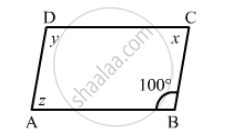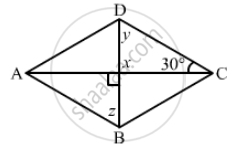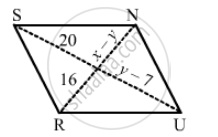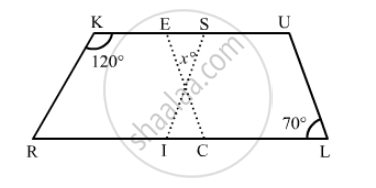Advertisements
Advertisements
Question
Two adjacent sides of a parallelogram are 4 cm and 3 cm respectively. Find its perimeter.
Solution
\[\text{ We know that the opposite sides of a parallelogram are equal } . \]
\[\text{ Two sides are given, i . e . 4 cm and 3 cm } . \]
\[\text{ Therefore, the rest of the sies will also be 4 cm and 3 cm }. \]
\[ \therefore \text{ Perimeter = Sum of all the sides of a parallelogram }\]
\[ = 4 + 3 + 4 + 3\]
\[ = 14 \text{ cm }\]
APPEARS IN
RELATED QUESTIONS
All rhombuses are parallelograms.
The following figure is parallelogram. Find the degree values of the unknowns x, y, z.

The following figure is parallelogram. Find the degree values of the unknown x, y, z.

In the following figure GUNS and RUNS are parallelogram. Find x and y.

In the following figure RISK and CLUE are parallelograms. Find the measure of x.

Two adjacent angles of a parallelogram are as 1 : 2. Find the measures of all the angles of the parallelogram.
In a parallelogram ABCD, ∠D = 135°, determine the measure of ∠A and ∠B.
Points E and F lie on diagonal AC of a parallelogram ABCD such that AE = CF. What type of quadrilateral is BFDE?
Which of the following statement is true for a rhombus?
It is a square.
Diagonals of a parallelogram intersect each other at point O. If AO = 5, BO = 12 and AB = 13 then show that `square`ABCD is a rhombus.
